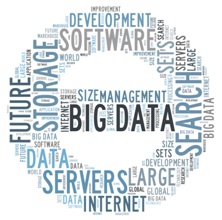Generating real time or near real time insights and enabling front line staff access actionable takeaways is a game changer. Be it pharma sales representatives or customer service agents or airline cabin crew, the window to resolve or enhance customer experience ranges from a few seconds to minutes at best. It is during this window that data driven insights make a lasting impact. Given the plethora of choices a customer has, it takes one encounter to churn, to spend less and form an opinion.
Numerous data sources – historical, transactional, demographic and behavioral need to be analyzed on the fly; statistical models running at the back spew insights from every single minute of customer encounter. This will render better targeting, personalization, and problem solving resulting in enhanced customer experience. The customer in question could be B2B or B2C, a physician or a frequent flyer or an organization.
Conventional analytics was by & large post-hoc. In other words, it took days & weeks if not months to capture, store, transform and analyze data. In the Big Data Analytics (BDA) scheme of things, all this happens instantly. Hence it has a lot to do with ‘speed’ besides volume, variety and variables.
For high performing organizations, the ability to leverage real or near real time insights calls for investment into people, process and technology. All these relate to Big Data Analytics – skill sets, infrastructure and more importantly a mindset to embrace change.
Having the necessary infrastructure enabling capture of vast amount of customer information alone does not act as a panacea to all the needs of the organization. The ability to analyse customer information residing in disparate systems across the organization and providing a unified view of the customer is essential for deriving actionable insights. Organizations that do not have a complete view of their customers’ interactions and history across products and services with them face the risk of lost business opportunities, and customer dissatisfaction. For instance, a call from a frontline bank associate to a customer with a large savings balance, offering a small personal loan will quite possibly not result in a sale. A call to the same customer offering investment services and advice will likely have a higher probability of a successful sale.
According to Gartner, Master Data Management (MDM) plays a critical role in effective Customer Relationship Management (CRM) processes. It further states that CRM processes that do not leverage MDM will end up annoying customers, resulting in a potential 25% loss in revenues. Big data and other analytical solutions can manage information from multiple sources and deliver real time analytics and insights to your frontline staff. They leverage technology to collate customer information residing in disparate systems to enable customer facing staff to deliver the ultimate customer experience, building loyalty and retention.
“Over the last few years, CRM software sales have outstripped overall IT spending,” according to Bill O’Kane, Research Director at Gartner. Organizations have realized that gathering more data on customers alone will not improve business decision making. Rather, harnessing the existing data to derive real-time insights enables informed decision making and customized solution offering for customers. With analytical advances, organizations are now able to empower employees with the information they need to address customers’ needs in near real time.
Proactive Issue Resolution for Loyal customers
Speed of generating insights coupled with a single customer view, enables frontline staff to engage better with the customer and offer superior service that turns customers into brand loyalists. In a typical customer helpline environment, the frontline agent has to provide quick resolution to the challenge the customer is facing. Systems enabling real time customer information will not only help resolve the current issue but also empower the frontline agent to anticipate any issue likely to occur in the future. The greater the instances of first call resolutions and reduced call durations, the higher an organization’s brand loyalty, customer retention, and subsequent top line growth. For example, in the case of a customer purchasing a product, an instant system update can lead to proactive help from the frontline staff on the product’s installation process.
According to a Corporate Executive Board study, 60% of customers call again to resolve their issue. Out of these, 54% call back because their issue was not resolved the first time and 46% call back because of a related issue. It therefore becomes important that frontline staff is able to search for solutions in real time that would address customers’ concern areas. Organizations that are able to relate, innovate and solve customer issues in a short time span are the ones that create customer engagement and forge a long-term bond with them.
Deeper Customer Engagement over Multiple Channels
In the recent past, a number of channels have mushroomed providing customers with increased opportunities for establishing communication with organizations, ensuring ease and comfort of doing business. While these channels act as comfortable communication media for the customers, they present organizations’ frontline staff with the challenge of monitoring multiple channels and providing real-time solutions.
An unhappy customer tweeting about his dissatisfaction with a company’s services would not be pleased to get a response a week later, or receiving a “Someone from our Customer Service Team will get in touch with you shortly” response. It is extremely challenging to monitor all existing communication channels for a possible negative feedback posted by a particular customer. For such cases, organizations can deploy technology to scan the web for comments, posts made about their services. With a system for real-time tracking and reporting, it can be ensured that social media posts by customers generate an alert for customer service representatives. It then becomes the task of the customer service representatives to immediately engage with the customer and resolve the matter.
An Empowered Front Line = Happy Customers
With the changing technology landscape and business scenario, organizations are in a better position to foresee the events that are likely to take place and plan ahead for them. Analysis of customer information residing in the company’s systems combined with external data sources and interpretation of real-time behavior enable businesses to provide a memorable experience to their customers. Proactively chalking out a customer engagement plan by leveraging data insights will help organizations differentiate and emerge as leaders. Leveraging real or near real time insights allows for not only understanding but predicting customer behavior. It enables “getting” into the minds of the customers, knowing their preferences and pain points. Furthermore, resolving them in a fast but precise manner. Every customer or consumer expects personalized service and first contact resolution. Real or near real time insights is one key element or dimension that enables customer loyalty. Ultimately, organizations that leverage every customer interaction as a revenue-generating opportunity will be able to create lasting relationships and grow their business.

Salil is a former Happiest Mind and this content was created and published during his tenure.







